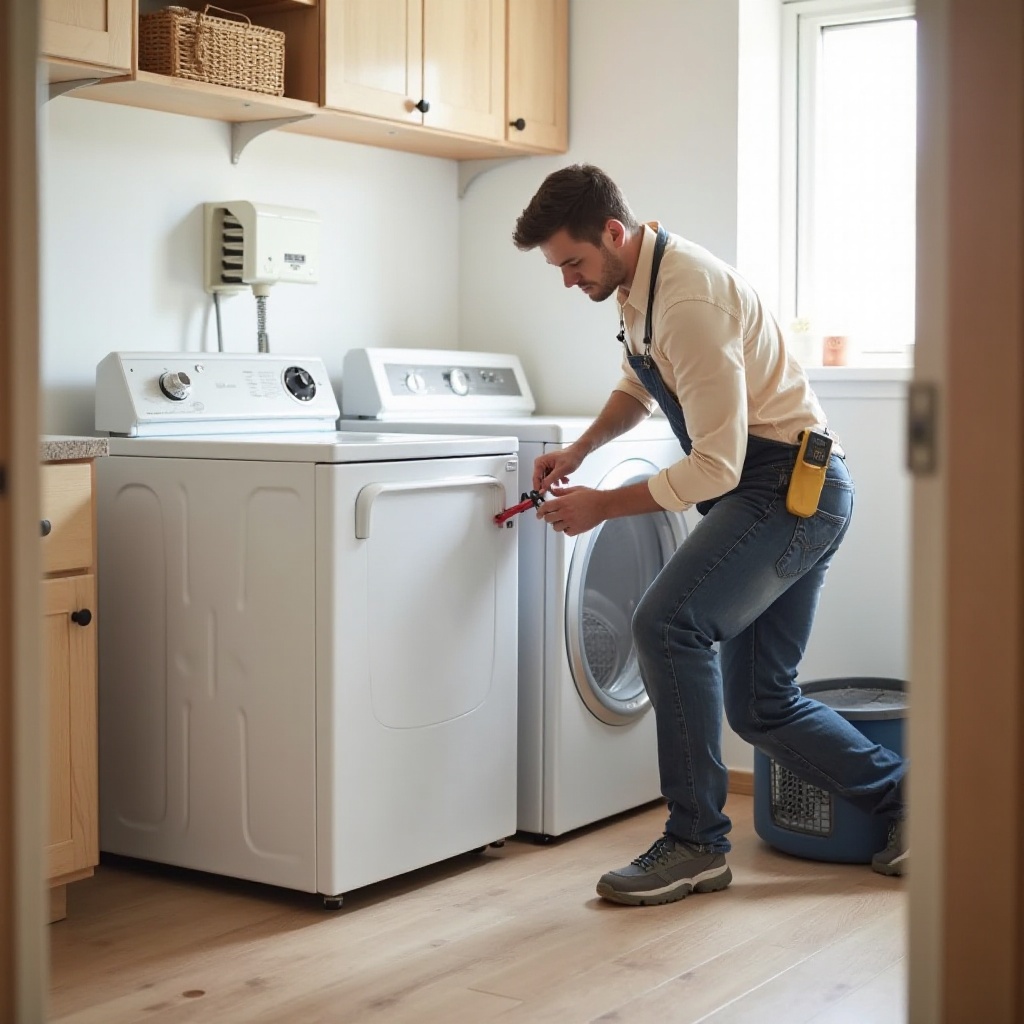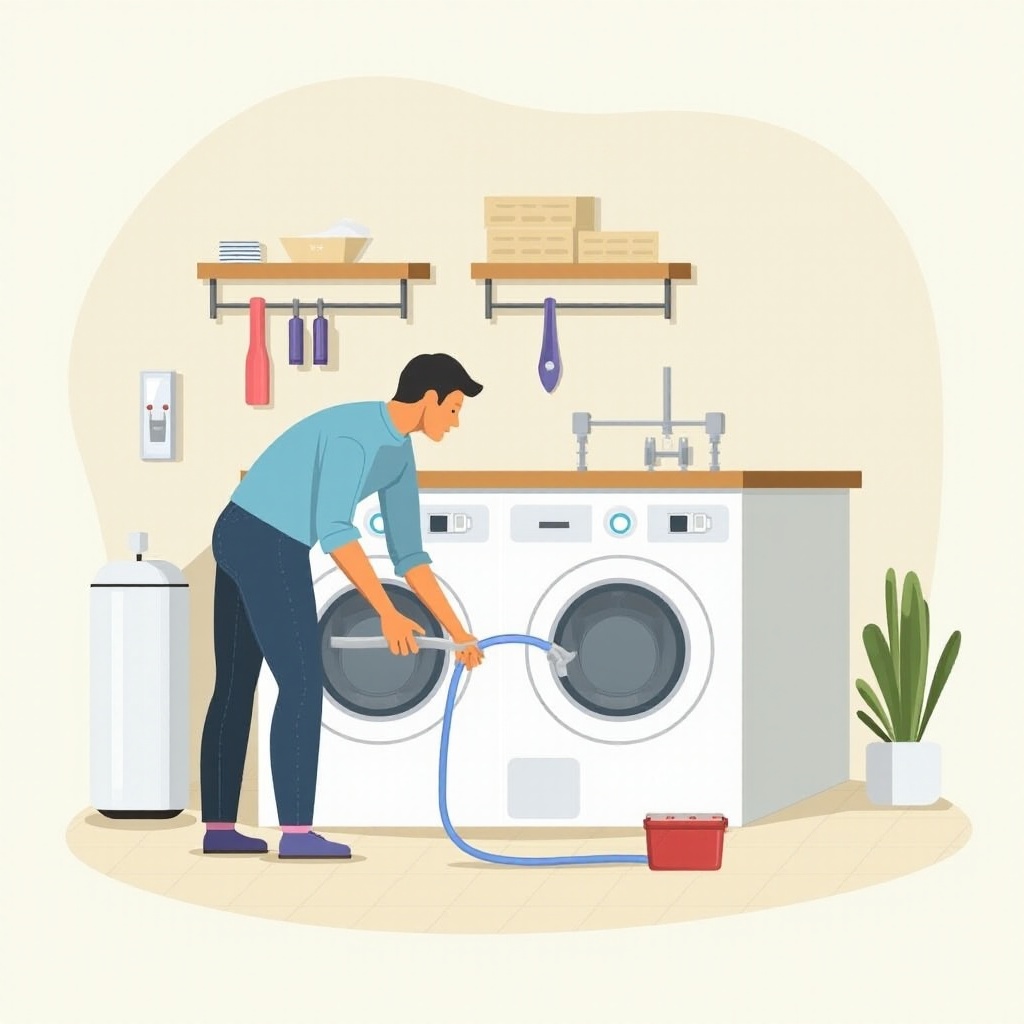Introduction
Disconnecting a dryer need not be a daunting task. Whether you're moving or upgrading, knowing how to safely disconnect both electric and gas dryers is essential. This guide outlines a step-by-step approach to ensure the process is seamless, safe, and efficient, helping you transition smoothly with your laundry setup.

Tools and Safety Gear You'll Need
Before beginning, gather the necessary tools to make the disconnection smooth and hazard-free. You will need:
- A screwdriver
- An adjustable wrench
- Pliers
- A voltage tester (specifically for electric dryers)
Safety gear is crucial, including gloves and safety goggles, to protect against accidents. With your tools and safety equipment at hand, you're ready to proceed effectively.

Preparation Steps Before Disconnection
Preparation is key to a successful disconnection. First, ensure the area is clear and well-ventilated to mitigate the risk of dust or gas exposure. Remove any flammable objects and confirm there is sufficient lighting.
Conduct preliminary safety checks:
- Verify that the floor around the dryer is dry.
- Locate the main power or gas supply.
- Confirm you have all necessary tools and safety equipment.
These steps set the stage for the secure handling of your dryer disconnection.
Step-by-Step Guide to Disconnecting an Electric Dryer
Electric dryers can pose an electrical hazard, so precision is necessary:
- Turn Off the Power: Unplug the dryer from the power source. If the plug is hard to reach, switch off the dryer’s circuit breaker to cut the power supply.
- Remove Vent and Exhaust Connections: Unscrew the clamps securing the vent hose and carefully detach it from the dryer to prevent debris from entering the vent opening.
- Detach the Electrical Connection: Use the voltage tester to ensure there's no electricity running. Remove the terminal block cover plate, then disconnect the wires using pliers, noting their arrangement for future reconnection.
Proceeding with caution for each step safeguards against mishaps and ensures your dryer is ready for its next chapter.
Step-by-Step Guide to Disconnecting a Gas Dryer
Handling a gas dryer involves careful attention to prevent gas leaks:
- Turn Off the Gas Supply: Rotate the gas valve to the 'off' position, making sure it's perpendicular to the gas line.
- Safely Unhook the Gas Line: Use an adjustable wrench to unscrew the gas line from the dryer. Vigilantly listen and smell for gas leaks during this process.
- Disconnect the Vent: As with electric dryers, unscrew the vent hose clamps and cautiously remove the hose.
Completing these steps ensures the gas dryer is safely dislodged and handled for future relocation or repair.
Common Mistakes to Avoid
Avoid common pitfalls to ensure a smooth disconnection experience:
- Overlooking Safety Steps: Always ensure the power and gas supplies are fully turned off before starting.
- Mishandling Connections: Avoid pulling or twisting wires and hoses. Use the appropriate tools to avoid damage.
Steering clear of these mistakes protects both you and your dryer, laying the groundwork for future reconnections or replacements.

Post-Disconnection Maintenance and Tips
Post-disconnection activities help in the upkeep of both your appliance and the surrounding area:
- Clean the Dryer and Area: Remove all lint and dust, keeping both the dryer and its environment clean.
- Inspect Dryer Components: Check hoses, vents, and any wiring for damage. Replace components if necessary before reusing the dryer.
These maintenance steps ensure your dryer remains in peak condition for whenever you're ready to reconnect or replace it.
Conclusion
In conclusion, disconnecting your dryer doesn't have to be a challenging task if approached methodically and safely. By using the right tools, adhering to each step carefully, and maintaining a focus on safety, you can achieve a smooth disconnection. This preparation ensures your appliance is ready for its next use, securing both peace of mind and functionality.
Frequently Asked Questions
How can I tell if the gas is turned off properly?
After turning the gas valve to 'off', ensure it's perpendicular to the gas line, indicating closure.
What should I do if I smell gas after disconnection?
Immediately ventilate the area, avoid using appliances, and contact a professional for inspection.
Can I reuse the same vent connections for a new dryer?
Yes, if they are undamaged and free of lint buildup. Clean and inspect them before reuse.
